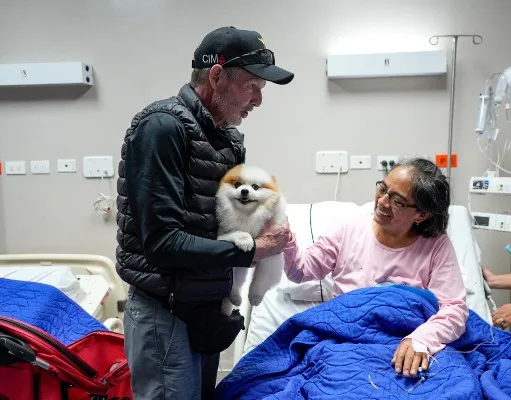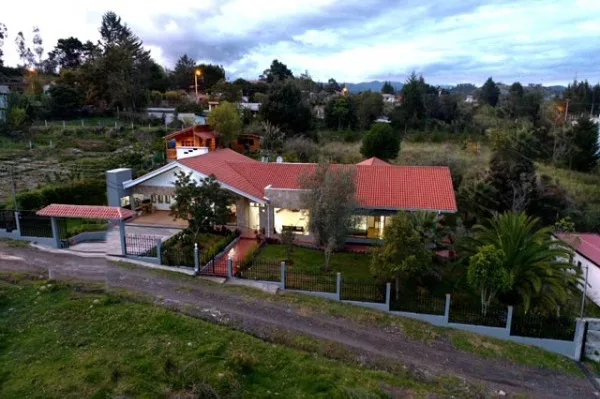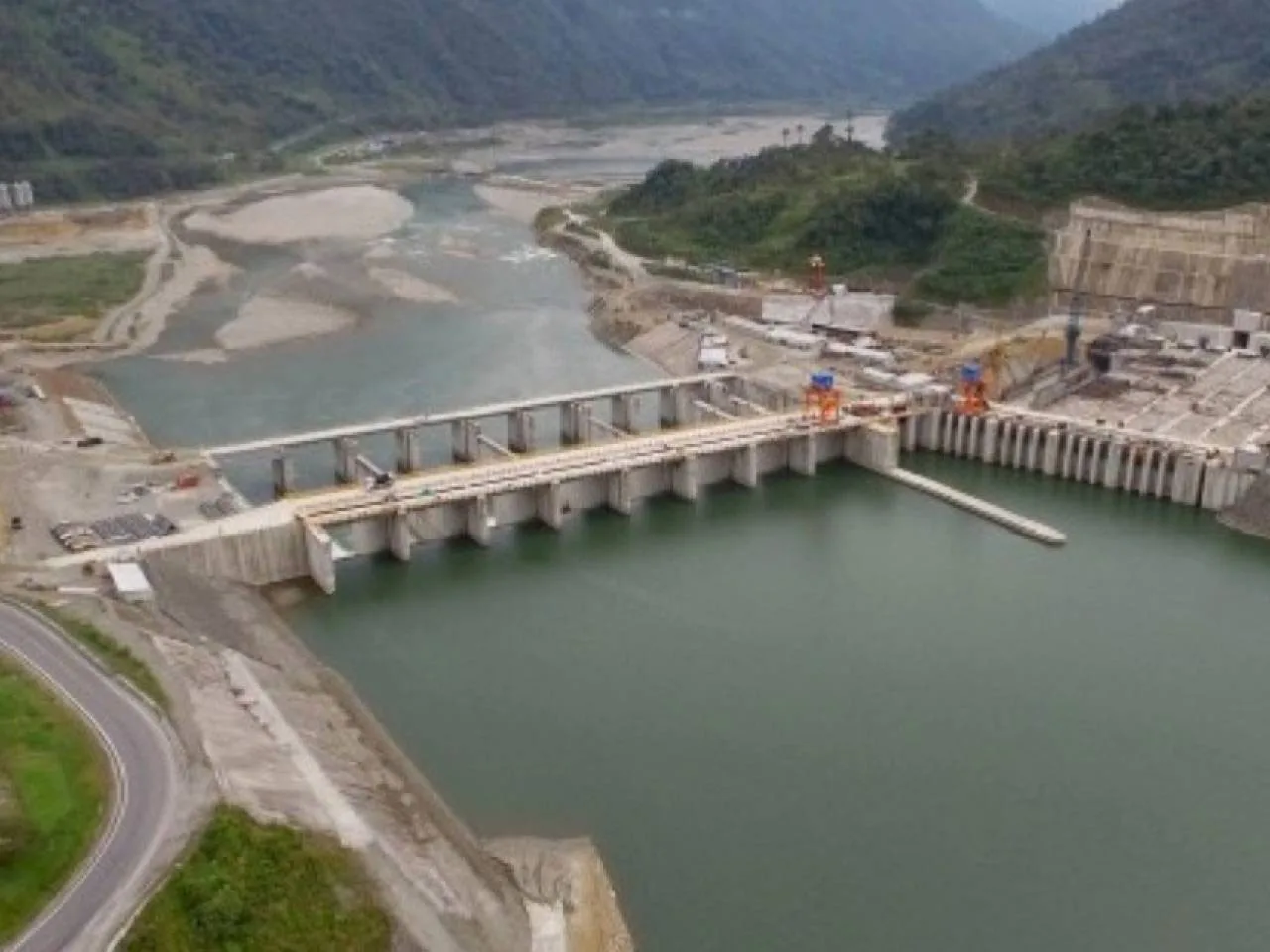Grow your own leafy greens in Cuenca
By Larry Scherwitz
Cuenca has the ideal weather to grow leafy greens for your salad bowl. On our historic district apartment balconies I have grown nine different varieties of kale, collards, lettuce, beets, onion, mustard greens, and various Asian greens. They love the filtered light, the temperature, the light rains, and with the right soil and moisture, they grow prodigiously and for long periods, remaining fresh

Garlic, spicy mustard, onions and tai-sai.
before they bolt to make seeds. And, you can grow them all year around for a continuous harvest.
Below are some tips for those interested in gardening in Cuenca, but first some reasons for gardening here.
Benefits: those healthy leafy greens are available just when you want them, the freshness is unbelievably invigorating to the taste buds, and what you can add to salads are the most nutritious foods humans can eat. Plus they can liven up a balcony space and give you an embrace with their health and vigor as you observe and care for them.
Sacred Pact. What do I mean by “an embrace”? Dr, Meyer Friedman, a famous cardiologist, once said to me that a key to health was to love pets, plants, and people. Plants are often forgotten in this equation. But there is research to support their health-giving benefits as you care for them. In a randomized, controlled clinical trial, elderly folks given a plant to take care of in a nursing home lived substantially longer than those not given plants. In fact, modern day vegetables have a sacred pact with humans; they need one another to thrive. Yes, over the centuries vegetables have been selected and hybridized to be juicy, sweeter, have plumper fruit, larger leaves, and other qualities we humans like. For a plant to adopt these qualities they need special care, as they would not thrive, and could not compete with weeds on their own. In fact, your vegetables will require more attention and tending than houseplants.
Eight Elements. How do you cultivate vigorous, nutritious, and tasty vegetables? You coordinate the eight elements for successful gardening: 1) selecting appropriate (to the weather) plant varieties, 2) finding vigorous seeds, 3) creating adequate space for roots and light, 4) using reflective or direct sunlight, but not too harsh, 5) watering frequently, 6) making good soil, 7) guarding and repelling insects, and 8) maintaining a loving regard that keeps these seven elements in synchrony.

Good soil makes for the best starts.
That’s a lot to think about, but gardening can be one of your most rewarding hobbies. Your harvest could not be fresher, the variety much greater, the color and texture of your plants more varied; they can be organic and you can select and grow those delicacies that epicurean cooks crave. You can share the bounty and give extra to friends, which can be very rewarding.
Okay, so let’s briefly go over the eight essential elements in the order given above.
- Plant Variety Selection. Look for plants that originated or were developed in cool climates such as northern Europe or the more northern regions of Asia; these are by far the best garden plants to grow in Cuenca. Warm weather plants such as tomatoes, peppers, and squash need special tending and will be less productive than when grown at lower altitudes. So select plants that love the climate here. That means plants in which you eat the leaves including onions, beets, as well as lettuce, collards, mustard greens, Asian greens, kale, Swiss chard, and garlic. These are the types of veggies that the locals grow in and around Cuenca.
- Good Seeds have a high germination rate and come up relatively quickly for their variety. I use seeds that were grown in the Pacific Northwest as well as trying local varieties that grow in the western outskirts of Cuenca. (See the photo of Seeds).

Young lettuce and beets.
- Adequate Space. To grow vegetables close together to get the most out of your urban space you should have abundant depth of soil. Know that the roots often extend well beyond the height of adult plants. I provide at least 21 inches of soil depth in my container garden.
- Reflective or Direct Light. You do not need full sun to grow leaf greens, but they probably need to be outside. If your patio or balcony has reflective light, say white walls, you can grown leafy greens even without sunlight. However, they will grow faster and bigger with a couple hours of direct sunlight. Your plants will tell you by their growth rate and vigor whether they like the light conditions, so you can move them around for maximum effect.
- Abundant Water. Leafy greens require considerable water, and considering that Cuenca’s high altitude and low air pressure speeds evaporation, you need to water leafy greens often and regularly. If you starve them they will wilt and turn bitter. Deciding when to water brings your awareness to the frequency and amount of rain so you become more aware of the weather.
- Good Soil. The two ingredients of good soil are texture and soil nutrients. I treat my soil like it is a multivitamin supplement for it is true that the better the plant is fed the better you will be fed. I fortify the soil from local nurseries with chicken and cow manure as well as calcium. Since the soil in this region is predominately clay, it is sticky when wet, crusts, and makes it difficult for tender shoots to break through when they sprout. I achieve the ideal texture with sand from the river and organic matter including rice hulls.

Young toscana kale and onions.
- Insects. You are not the only one who will like your greens and you will have to guard them from insects. My only problem has been with aphids and an occasional worm. Aphids like the under-sides of the leaves of certain plants like tai sai and spicy mustard; aphids and worms all but ignore stronger tasting plants such as Champion collards. You can use a little dish-washing soap and a good sprayer that allows you to sharpen the stream to a narrowly focused pulse of water that will knock off and drown the aphids. It will take them a whole new cycle to repopulate the leaves. Vigilance is key because an outbreak can spread fast.
- Loving Regard. This loving regard has both tangible and intangible effects on the plants and on you when you consume them. Part of this loving regard is appreciating nature in the form of the rain, sunshine, and even the growth cycle of insects. Another part of the loving regard is observing the plants and taking the time to coordinate the seven other elements. Yet another part is appreciating and enjoying every stage from soil composting, planting, transplanting, watering, harvesting, and making salads. Ever wonder why some people have a green thumb and other’s don’t. Appreciation and care are part of it, but I believe that another ingredient is what also makes a good cook. The Hindus call it prana or life force, which can be projected into and be received from plants when you consume them. Research it and you will find evidence that plants have consciousness, so they revel in prana, the life force that flows through us the way your pets do.
My experience of gardening here in Cuenca was initiated when Andres Avecillas, the oldest son of my best Ecuadorian friend, unexpectedly came to our door and said he wanted to be a facilitator for expats. Andres is a college student majoring in tourism.

Planter box on an interior balcony.
I took him under my wing and gave him work to do. I chose gardening as one of the tasks that would give him a wide range of skills. I found a planter box design and had four custom-made pine wood planter boxes built (you won’t find them ready made in Cuenca). We found roofing material to line the interior to protect the wood, and we figured out how to plumb the bottoms to drain extra water.
Andres can help you if you are interested in urban gardening. Andres and I made many trips around town to find good soil, fertilizers, seeds, plant containers, and small plants. He did an excellent job bargaining the purchases of these materials. For a reasonable price he provided the labor of hauling all the materials in his pickup and delivering them to our condo. He now knows the proportions of soil ingredients, what will grow well here, and where to go for everything you may need. He has a beginning knowledge of insects and how to deal with them organically. He also knows what expats expect in terms of service. For example, for the wooden container boxes he sent me Excel spreadsheets detailing estimated labor and material costs as well as invoices in the same form. He is bilingual, a good communicator, has a helping attitude, and shows up on time. And since I have known him he has always been in a upbeat mood.
You can contact Andres at 098 472 2474 or email mario-_-1208@hotmail.com
________________

Larry Scherwitz
Larry Scherwtitz, Ph.D. is a medical researcher who has specialized in the effects that lifestyle changes have on human health, particularly in the reversal of coronary heart disease and prostate cancer. To read his articles on the subject, click here, here, here, and here. He lives in Cuenca.
















